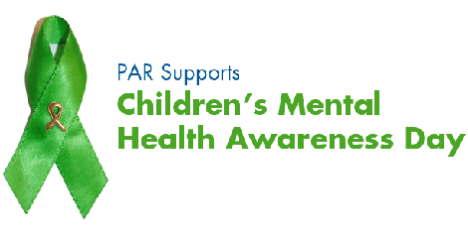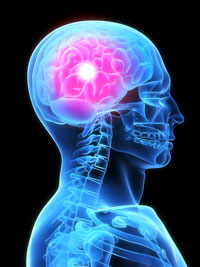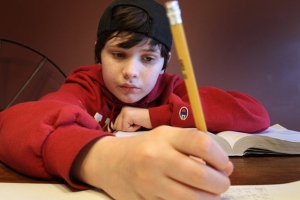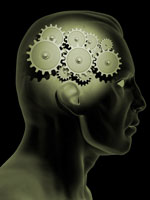Halloween is coming! Children and adults alike are carving pumpkins, dressing in costumes, and getting ready for an exciting evening of trick-or-treating. For those suffering with mental health issues, however, this can be an especially difficult time of year as they are reminded of the heavy stigma associated with their illness. A drive through your city or a stroll down the aisles of your local department store is all it takes to confirm that offensive stereotypes are alive and well when it comes to the mentally ill. Billboards and advertisements depicting “Haunted Asylum” or “Psychopath Sanctuary” attractions are hard to miss. “Mental Patient” costumes, complete with straightjackets, perpetuate the stereotypes further.
The National Alliance on Mental Illness (NAMI) is an advocacy group that is fighting these stereotypes and pressuring businesses to remove offensive attractions and costumes. “NAMI loves Halloween as much as anyone else,” says Bob Corolla, NAMI Director of Media Relations, in a recent blog. “But would anyone sponsor a haunted attraction based on a cancer ward? How about a veterans’ hospital with ghosts who died from suicide while being treated for posttraumatic stress disorder?”
NAMI encourages its members to help raise awareness about the problem in their own communities. Corolla says that the first step is to personally contact sponsors of “insane asylum” attractions or stores that carry offensive costumes. In some cases, small changes to the attraction or its marketing can make a big difference. Further steps include enlisting others to make calls and write emails of protest. Local television stations and newspapers can be educated about the problem—and many are willing to cover a protest as a news event.
Will it make any difference? In response to protests from mental health advocates, the U.K. superstore Asda (a Wal-Mart company) and major grocery chain Tesco were persuaded to remove offensive costumes from their shelves. Both stores apologized for their insensitivity; Asda called it “a completely unacceptable error” and has donated £25,000 to the U.K. mental health charity Mind.
Corolla cautions that you should be prepared for a backlash when people feel that you are criticizing their fun. But even then, you may be more effective than you know. “Even if it seems that too many people disagree with your position,” he says, “you win simply by raising awareness.”
Visit the NAMI Web site to learn more about what you can do to fight the stigma against mental illness.
Filed under: Advocacy | Tagged: mental health, mental illness stigma, NAMI | Leave a comment »



 wayside. Who but a brazen crazy person would go one-on-one with blank paper or canvas armed with nothing but ideas?”
wayside. Who but a brazen crazy person would go one-on-one with blank paper or canvas armed with nothing but ideas?” National Children’s Mental Health Awareness Day
National Children’s Mental Health Awareness Day
 Awareness Month.
Awareness Month. prestigious universities in the country with his challenge to Einstein’s theory of relativity. Jacob grasps some of the most complex concepts in mathematics and physics. Instead of junior high school, he attends Indiana University-Purdue University Indianapolis (IUPUI), where there is a movement to get him on board as a paid research assistant. Recently, he created a YouTube video in which he explains his work, using markers on the windows of his home to show the mathematical calculations behind some of his ideas. Not bad for a boy who didn’t speak his first words until after his second birthday and has been diagnosed with Asperger’s disorder, a mild form of autism. But then again: Einstein didn’t speak until age four, and many psychiatrists now believe that he may have had Asperger’s disorder, as well.
prestigious universities in the country with his challenge to Einstein’s theory of relativity. Jacob grasps some of the most complex concepts in mathematics and physics. Instead of junior high school, he attends Indiana University-Purdue University Indianapolis (IUPUI), where there is a movement to get him on board as a paid research assistant. Recently, he created a YouTube video in which he explains his work, using markers on the windows of his home to show the mathematical calculations behind some of his ideas. Not bad for a boy who didn’t speak his first words until after his second birthday and has been diagnosed with Asperger’s disorder, a mild form of autism. But then again: Einstein didn’t speak until age four, and many psychiatrists now believe that he may have had Asperger’s disorder, as well. Most of those surveyed had been informed of their insurance coverage benefits before the state parity law went into effect in 2007, but were not aware of the extended coverage as a result of the law. Individuals also reported that their health plan provided unclear or incomplete information about their benefits, they had more difficulty obtaining information on mental health benefits than on medical/surgical benefits, and they felt their insurance companies were managing their mental health care benefits more aggressively than their medical/surgical benefits.
Most of those surveyed had been informed of their insurance coverage benefits before the state parity law went into effect in 2007, but were not aware of the extended coverage as a result of the law. Individuals also reported that their health plan provided unclear or incomplete information about their benefits, they had more difficulty obtaining information on mental health benefits than on medical/surgical benefits, and they felt their insurance companies were managing their mental health care benefits more aggressively than their medical/surgical benefits.